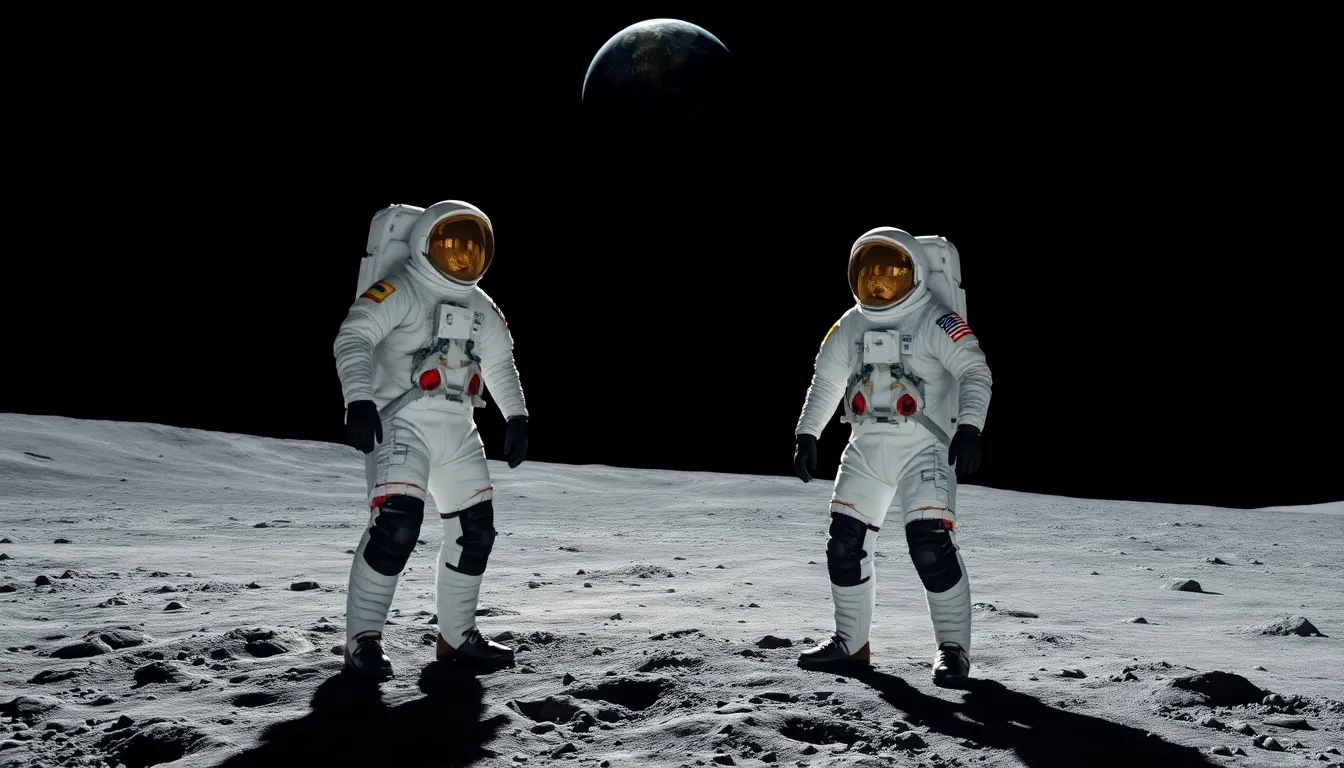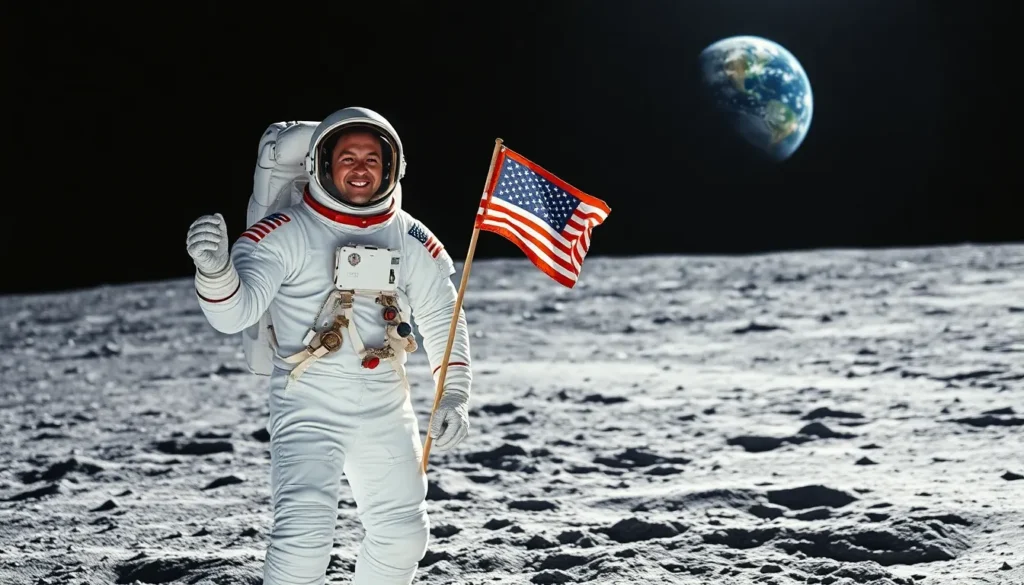Human space exploration has captivated imaginations for decades, pushing the boundaries of what’s possible beyond our planet. As nations and private companies invest heavily in this frontier, the quest to understand the cosmos takes on new urgency. From the Moon to Mars and beyond, the potential for discovery is limitless.
With advancements in technology and a growing interest in sustainable space travel, humanity stands on the brink of a new era. The challenges are immense, but so are the rewards. Exploring other worlds not only expands scientific knowledge but also inspires generations to dream big and reach for the stars. As we embark on this journey, the implications for science, culture, and the future of life on Earth become increasingly profound.
Table of Contents
ToggleOverview of Human Space Exploration
Human space exploration encompasses the journey of astronauts beyond Earth’s atmosphere to conduct research, gather data, and explore celestial bodies. Nations such as the United States, Russia, China, and members of the European Space Agency have been at the forefront, launching missions that expand knowledge and capabilities.
Key Milestones
- Vostok 1: Launched in 1961, this mission marked Yuri Gagarin as the first human to orbit Earth.
- Apollo Program: Between 1961 and 1972, NASA completed six successful lunar landings, ushering in a new era of exploration with the first moonwalk by Neil Armstrong in 1969.
- International Space Station (ISS): Established in 1998, the ISS serves as a microgravity laboratory where astronauts conduct experiments and collaborate internationally.
Current Missions and Future Plans
- Artemis Program: NASA aims to return humans to the Moon by 2024, emphasizing sustainable exploration that lays the groundwork for eventual Mars missions.
- Mars Exploration: Unmanned rovers like Perseverance and the upcoming human missions signal the drive to explore Mars and assess its habitability.
- Commercial Spaceflight: Companies like SpaceX and Blue Origin are revolutionizing access to space, paving the way for private missions and potential tourism opportunities.
Challenges Faced
- Radiation Exposure: Long-duration space travel exposes astronauts to increased levels of cosmic radiation, requiring robust shielding and health monitoring.
- Life Support Systems: Reliable systems for air, water, and food remain critical for sustained human presence on other celestial bodies.
- Psychological Effects: Long missions can affect mental health, necessitating the inclusion of psychological support measures.
Implications of Human Space Exploration
- Scientific Discovery: Discoveries from missions enhance understanding of planetary formation, climate, and potential life beyond Earth.
- Technological Advancements: The demands of space exploration drive innovations that often translate into improvements in technology on Earth.
- Cultural Inspiration: Human achievements in space exploration inspire global unity and curiosity, motivating future generations in STEM fields.
Human space exploration stands as a testament to human ingenuity and the quest for knowledge, pushing boundaries and expanding horizons in an era ripe with potential.
Historical Milestones

Human space exploration features significant achievements that shaped the course of science and technology. Key milestones underscore humanity’s journey into space and the ongoing quest for knowledge beyond Earth.
The Space Race
The Space Race emerged during the Cold War, highlighting competition between the United States and the Soviet Union for supremacy in space exploration. The launch of Sputnik 1 on October 4, 1957, marked the first artificial satellite in orbit, signaling the beginning of this rivalry. Yuri Gagarin became the first human in space on April 12, 1961, aboard Vostok 1, successfully completing one orbit around Earth in 108 minutes. In response, NASA accelerated its efforts, ultimately leading to the Apollo 11 mission, which successfully landed humans on the Moon in 1969. This period not only spurred technological advancements but also showcased the power of human ingenuity.
Apollo Missions
The Apollo Program, initiated by NASA, consisted of a series of missions aimed at landing humans on the Moon and returning them safely to Earth. Apollo 11, launched on July 16, 1969, achieved this goal, with astronauts Neil Armstrong and Buzz Aldrin becoming the first and second humans to walk on the lunar surface on July 20, 1969. In total, six lunar landings occurred between 1969 and 1972, with Apollo 17 being the last mission to land on the Moon, completing its journey in December 1972. These missions delivered extensive scientific data, lunar samples, and invaluable experience in human spaceflight, significantly advancing understanding of both the Moon and broader space concepts.
Current Missions in Human Space Exploration
Human space exploration continues to advance with various missions directed by national space agencies and private companies. Noteworthy projects like the International Space Station (ISS) and NASA’s Artemis Program play essential roles in shaping the future of human activities in space.
International Space Station
The International Space Station (ISS) serves as a collaborative effort involving agencies such as NASA, Roscosmos, ESA, JAXA, and CSA. It orbits Earth at about 250 miles (400 kilometers) and supports scientific research in microgravity. The ISS facilitates studies in biology, physics, and materials science, impacting technology and medicine on Earth.
Since its launch in 1998, the ISS has hosted over 240 astronauts from multiple countries. Scheduled missions, such as NASA’s Crew-7 and Crew-8, continue to send astronauts aboard for extended stays to conduct experiments and work on maintenance tasks. The ISS’s role as an orbiting laboratory and international cooperative project exemplifies the shared ambition of advancing human space exploration.
Artemis Program
NASA’s Artemis Program aims to return humans to the Moon by 2024, marking a significant milestone since the Apollo missions. Artemis consists of a series of missions designed to establish a sustainable presence on the lunar surface. The program focuses on scientific exploration while laying the groundwork for future crewed Mars missions.
Key aspects of the Artemis Program include the construction of the Lunar Gateway, a space station orbiting the Moon that will support lunar surface operations and provide a staging point for crewed missions. Artemis I, an uncrewed test flight, demonstrated the capabilities of the Space Launch System and the Orion spacecraft. Artemis II, set to carry astronauts around the Moon, will pave the way for the eventual lunar landings planned in Artemis III. This ambitious program strives to inspire future generations and expand our understanding of lunar science and exploration.
Future Prospects
Human space exploration continues to expand, supported by technological advancements and innovative missions. This evolution opens new frontiers, with Mars and commercial space travel at the forefront.
Mars Missions
Mars missions represent a significant aspect of future human exploration. NASA’s Artemis Program aims to develop the technologies needed for crewed missions to Mars by the late 2030s. The Perseverance rover, launched in 2020, seeks signs of past life and collects samples for potential return to Earth. SpaceX contributes to Mars exploration with its Starship, designed to transport crew and cargo, potentially facilitating human settlement. The European Space Agency also plans Mars missions, collaborating with various international partners to enhance research capabilities, thus fostering a comprehensive understanding of the Martian environment.
Commercial Space Travel
Commercial space travel reshapes the landscape of human space exploration. Companies such as SpaceX, Blue Origin, and Virgin Galactic invest heavily in space tourism and transportation services. SpaceX’s Crew Dragon vehicle regularly transports astronauts to the ISS, while Blue Origin’s New Shepard focuses on suborbital flights for tourists. Future plans include establishing a lunar surface station and conducting missions to Mars. Partnerships with national space agencies provide essential support, ensuring safety and innovation. Increased activity within the commercial sector enables broader access to space, inspiring public interest and generating economic opportunities within the burgeoning space economy.
Technological Advancements
Technological advancements play a crucial role in human space exploration, enhancing safety, efficiency, and the ability to conduct long-duration missions. Key areas of development include life support systems and spacecraft design.
Life Support Systems
Life support systems ensure that astronauts can survive and thrive in space. These systems recycle air and water, providing essential resources for crew members. Innovations include advanced regenerative life support systems, which utilize bioreactors to convert waste into clean water and oxygen. NASA’s research on closed-loop systems aims for complete sustainability during long missions, such as those planned for Mars. Such systems involve a combination of technologies, including water reclamation systems and carbon dioxide scrubbers, to maintain a stable environment.
Spacecraft Design
Spacecraft design significantly impacts mission success and astronaut safety. Modern spacecraft utilize lightweight materials that improve fuel efficiency and reduce launch costs. The incorporation of autonomous systems enhances navigation and operational capabilities during missions. For example, NASA’s Orion spacecraft features advanced avionics and safety systems designed for deep space travel. Additionally, SpaceX’s Starship employs a reusable design aimed at reducing operational costs and increasing access to space. Continuous advancements in propulsion systems, such as electric propulsion, offer increased efficiency for deep-space missions, facilitating exploration of distant planets.
Challenges Ahead
Human space exploration faces several formidable challenges that could hinder progress and success. Addressing health risks and securing funding amid political complexities are paramount for continued advancements in this field.
Health Risks
Health risks present significant barriers in human space exploration. Exposure to cosmic radiation increases the likelihood of cancer and other illnesses. Long-term microgravity affects muscle atrophy and bone density loss, complicating astronaut health. Additionally, psychological impacts from isolation and confinement during lengthy missions can lead to anxiety and depression. Mitigating these health issues requires advanced research into countermeasures, such as targeted exercise regimens and psychological support systems.
Funding and Politics
Funding and politics play critical roles in human space exploration. Competing national interests often dictate resource allocation, with budget fluctuations impacting mission timelines. Collaborations among countries and private enterprises can enhance financial stability but may introduce complex political dynamics. Consistent governmental support and investment are essential for sustaining long-term exploration initiatives. Engaging the public and raising awareness about the benefits of space exploration can also foster broader financial backing.
Human space exploration represents a pivotal chapter in humanity’s quest for knowledge and understanding. As nations and private companies invest in groundbreaking technologies and sustainable practices, the possibilities for future discoveries grow exponentially. The challenges faced are significant but not insurmountable, and collaboration is key to overcoming them.
This new era of exploration not only pushes the boundaries of science but also inspires generations to dream beyond Earth. With ongoing missions and ambitious plans for Mars and beyond, the future of human space exploration is bright and full of potential. As we look to the stars, the journey is just beginning, and the impact on life on Earth could be profound.




